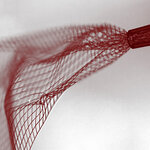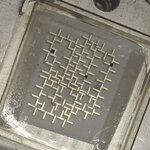Technology

Men with an elevated, genetically inherited risk for prostate cancer could be routinely identified with a simple blood or urine test, scientists at UC San Francisco and Kaiser Permanente Northern California have concluded, potentially paving the way to better or earlier diagnosis.
The study, which compared 7,783 men with prostate cancer to 38,595 men without the disease, is available online and will be published in an upcoming issue of the journal Cancer Discovery.
The new study is one of the first to come out of the collaboration between UCSF and Kaiser Permanente Research Program on Genes,…

I write drafts on paper. It would be nice if the electronic versions of documents looked similar to the drafts. It would be even better is the same paper-like form could be used for a web site with all its menus and an eBook with all the chapters. In this blog, I will go over the technology stack I use to present the same simple text on a web site and an eBook. This works for a static web site (things are added only once in a while). One needs to be comfortable with open source software, and tweaking other people's code a little.
HTML, CSS, and Javascript…

You no longer have to look to science fiction to find the cyborg. We are all cyborgs now. Mobile phones, activity trackers, pacemakers, breast implants and even aspirins all act as biological, cognitive or social extensions and enhancements of our bodies and minds. Some have even predicted that human beings as we know them will be replaced by technically enhanced, god-like immortal beings within 200 years. Or at least rich people will.
The next generation of wearable technology is set to take us one step closer to this predicted future. We are now looking at a future of bionic, data-rich and…

A company in the Netherlands is building a bridge across a canal in Amsterdam using 3D-printing robots.
It seems that such attention-grabbing headlines appear regularly to declare how 3D-printing is destined to revolutionize manufacturing of all kinds. If the idea that key manufacturing products such as cars, aircraft – or indeed bridges – built by 3D printing sounds like hype, you’re mistaken.
It’s human nature to be suspicious of new things: we find them both attractive and worrying. The manufactured world around us has been made by cutting and casting and forging for many centuries. We…

Blue Bell Creameries has been battling a Listeria monocytogenes outbreak for the past five years. The potentially killer bacteria was found in ice cream served at a Kansas hospital and sold by retailers. Reports most recently are blaming plants in Alabama, Oklahoma and Texas.
The outbreak triggered a product recall of all Blue Bell ice cream and affected nearly a dozen people across four states. Health officials used genome sequencing to identify the source of the problem, but not before three people died.
It’s possible that a single swab of DNA could have prevented this crisis or at…

Imaging lung cancer requires both precision and innovation and clinical positron emission tomography (PET) imaging reates advanced whole-body parametric maps, which allow quantitative evaluation of tumors and metastases throughout the body, according to research announced at the 2015 Annual Meeting of the Society of Nuclear Medicine and Molecular Imaging (SNMMI).
Scientists have developed a novel agent for cancer imaging that seeks and attaches to integrin in the body. Biochemically, integrin facilitates cellular signaling and that makes it ideal for imaging growing and metastatic…

Electronic devices that can be injected directly into the brain, or other body parts, have been a staple of science fiction for decades - and they seem a little closer to reality if you visit Charles Lieber's chemistry lab at Harvard.
A team of international researchers, led by Lieber, has developed a method for fabricating nano-scale electronic scaffolds that can be injected via syringe. Once connected to electronic devices, the scaffolds can be used to monitor neural activity, stimulate tissues and even promote regenerations of neurons.
In an earlier study, scientists in Lieber…

A case study reports on a young woman who gave birth to a healthy child after doctors restored her fertility by transplanting ovarian tissue that had been removed and frozen while she was a child.
There have been reports of successful pregnancies after ovarian transplantation using tissue that had been removed from patients as adults but this is the first successful instance using tissue taken from girls before puberty.
The patient, born in the Republic of Congo, was diagnosed with sickle-cell anemia when she was 5. After emigrating to Belgium at the age of 11, doctors decided that her…

The Global Sanitation Fund's latest Progress Report details how support for nationally-led programs has helped 7 million people in over 20,500 communities become open-defecation free, improved toilets for 4.2 million people and seen eight million people gain access to hand-washing facilities. The governments of Australia, Finland, the Netherlands, Sweden, Switzerland and the United Kingdom contributed.
Established by WSSCC, the GSF funds large-scale behavior change activities to help poor people in the world's hardest-to-reach areas attain safe sanitation and adopt good hygiene practices. The…

Welcome to a new way to manipulate matter.
Mixing computers and water typically is usually a bad idea but bioengineers at Stanford have built a synchronous computer that operates using the physics of moving water droplets. They used droplet fluid dynamics to demonstrate a synchronous, universal droplet logic and control.
Because of its universal nature, the droplet computer can perform any operation that a conventional electronic computer can crunch, although still at significantly slower rates in this early stage.
The crucial clock
Computer clocks are responsible for…